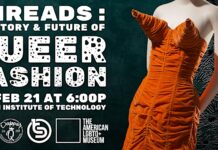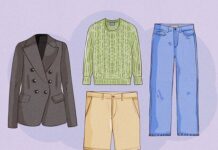New exhibition
October 20, 2022 to April 23, 2023
QUÉBEC CITY, Oct. 19, 2022 /CNW Telbec/ – This fall, the Musée national des beaux-arts du Québec (MNBAQ) will highlight the work of Evergon, a key figure in Canadian photography, an unclassifiable, daring artist. Presented from October 20, 2022 to April 23, 2023, Evergon. Theatres of the Intimate is a dense, forceful retrospective devoted to an artistic and social pioneer. Over time, the artist has focused on essential questions such as sexual, body, and identity diversity. The exhibition assembles for the first time more than 230 works to celebrate a rich and diverse career spanning 50 years. By exploring varied photographic techniques, Evergon has produced striking imagery that is always moving and occasionally irreverent, often as a continuation of great classical painting. The simultaneously political and sensualistic nature of his work raises questions on gender identity. He re-examines with rare vitality genres such as portraits, landscapes, and nudes, usually men.
This major exhibition focuses on 10 essential themes covering Evergon’s entire career from 1971 to the present. It dwells on the notion of the encounter between theatricality and intimacy, i.e., the public expression of the private sphere, to properly present this colourful character and his singular career.
With his unrestrained sense of humour, the artist offers a mischievous warning to adventurous visitors: “Some of these images might not offend you!”
Once Upon a Time… Evergon
What is the source of the intriguing name Evergon? The artist, Albert Jay Lunt, was born in 1946 in Niagara Falls, Ontario. This important photographer also taught photography during a lengthy career at the University of Ottawa and Concordia University in Montréal. He adopted Evergon, his main pseudonym, for the first time in 1975, to reject his last name and a gendered name.
Evergon has chosen several other nicknames in the course of his career. Shifting between the masculine and the feminine, he has adopted Celluloso Evergonni, Eve R. Gonzales, or Egon Brut. More recently, he has opted for the Chromogenic Curmudgeons, in tandem with a longstanding accomplice, Québec artist Jean-Jacques Ringuette, who has also been one of his models and collaborators. Each pseudonym is linked to the development of a distinct aesthetic in his work and reflects his desire to relinquish his attachments.
At the same time, he was an early gay rights militant. At the outset of his career, Evergon spoke loudly and clearly on behalf of gay culture relegated to invisibility through the expression of a masculinity that differed from the usual stereotypes defined by conventions.
Constantly reinvent oneself
For those who will discover Evergon’s fascinating universe, his long-term output is presented at the MNBAQ through a contemporary prism. Themes such as everyday life, self-staging, desire, death, fragility, and old age, which, when we look closely are everybody’s lot, permeate his photographic practice. Nudity and sexuality are broached directly in his works, revealing a fantasy world, which he draws from fiction, mythology, and great baroque painting. The exhibition dwells on the notion of the encounter between theatricality and intimacy, i.e., the public expression of the private sphere.
Through an array of alternative photographic approaches Evergon explores and goes deeper into the terms of queer identity, thereby upsetting overly fixed perceptions. He disrupts the foundations of the photographic image through an astonishing baroque aesthetic and brushes aside the conventional canons of beauty by representing atypical bodies that he invests with panache. He thereby avoids well-trodden paths while capitalizing on the seductive power of photography by inventing fictions or theatres and creating resolutely playful, profoundly lucid universes.
Photography, a favourite medium
Evergon embodies a tremendous creative force with more than 1 000 solo and group shows to his credit. Constant, daring photographic, technological, and aesthetic research are the hallmarks of the artist’s prolific career, in which he quickly relinquished prior relatively traditional training in art. The technologies used include reliance on non-silver-halide or electrostatic processes such as cyanotype or photocopying, along with composite or large-format Polaroids, holography, and digital images.
The varied exhibition also comprises a series of self-portraits, sophisticated collages, and a parade of everyday objects presented in a theatrical perspective. The small, medium, and large-format Polaroids reveal the artist’s penchant for old paintings, which he boldly re-examines, and his love of games and acrobats. Evergon invents other fictions, in particular the Ramboys, a fictitious secret, male society. Bodies become heated in certain series of images in which the nudity and sexuality are blunter. One section is also devoted to the artist’s mother Margaret, one of his muses and his greatest admirer. The themes of the fragility of life and the possibility of death are also present, where the artist poses as a wise old man in addition to paying tribute to those who have died and disappeared.
Essential works in the exhibition
“All my works are love letters.”
Evergon
The exhibition hinges on 10 themes that reveal a multifaceted body of work: Making the Image: (Self-portraits, The techniques, The signatures, Xerox Collage), The Polaroids, Love Letters and Various Passions, Inventories of the Intimate, Ramboys and Other Fictions, Active Bodies (Manscapes, Men of Manscape, XXX-L), Margaret, Portraits of a Winter Garden, Neverending Story, In memoriam.
Several series of striking works have punctuated Evergon’s career. The artist regards all his works as love letters addressed to his collaborators, lovers, models, and anyone who looks at him.
Ramboy Offering Polaroid of Self Exposed in Hiding (1996), from the series Ramboys: A Bookless Novel, stemming from collaboration between Egon Brut and Celluloso Evergonni, is among the major works that have received critical acclaim. Half-men, half-rams, the Ramboys are fantastic beings reminiscent of mythological satyrs that Evergon imagined in the 1990s. This fascinating photograph of a Ramboy holding out a Polaroid literally appears to invite us to cross to the other side of the mirror to enter the artist’s universe.
The work Bizarre (1979), from the Wooden Boxes Collection series, representing Evergon’s lover in the early 1980s, with its expressive collages, focuses on the motif of the box, also found in the work of the surrealists. The artist also places translucid paper in front of the image, producing an aura of depth and floating in the collages that the photocopier has nonetheless flattened.
Ecstasy Hawks Splashing (1980), from the Paper and Porcelain Men series, illustrates fragility. Evergon has immortalized several collages combining photography and various illustrations using a Xerox machine. The light from the blue-tinted inks that runs through the entire series combined with the unusual nature of the oneiric bodies instil a dreamlike dimension in the collages.
Ramba Mama III (1992), from the series The Ramboys: A Bookless Novel, is also a prominent work in the exhibition. The presence of the Ramba Mama in the fictitious universe of the Ramboys clearly reveals the importance of the mother figure. She assumes the features of Evergon’s mother, who guided her gay children in Niagara Falls where they grew up, an environment shaped by censorship, intolerance, and persecution. It is a classical portrait of the naked mother goddess wearing a ram’s head, displaying her pride, dignity, and strength.
Tempest (1994), from the series Manscapes: Truck Stops, Lovers Lanes and Cruising Grounds by Egon Brut, is far-removed from staged photography. It proposes photographic documents, a survey of meeting and cruising sites that are part of gay folklore. The artist has travelled the world in search of such sites and accumulated more than 7 000 photographs, a substantial collection that resembles the sweeping photographic missions in fashion in the 19th century. Evergon has undertaken an archaeological exploration of these sites that express male desires.
In the photograph Homage to Raphael: Jupiter Kissing Cupid of The Harmony Lesson (2006), from the series XXX-L, Evergon returns to the subject and composition of Amour et Jupiter (1517-1518), a fresco attributed to Jules Romain, a student of Raphaël, situated in the Loggia of Psyche in the Villa Farnesina in Rome. The artist draws from existing mythology to express his protest in a striking reflection on passion, old age, sexuality, and physical beauty.
Crossing the Equator Going South Pacific Rim (2009) is a comical fantasy produced in collaboration with painter Ian Shatilla of a character tattooed on Evergon’s stomach during his youth that appears to have grown and now become more solid than he is. The artist stages himself and pauses with the fake tattoo, thereby creating this amazing fiction.
Lastly, Portrait from the Winter Garden (2017), from the series Housebound, produced by the Chromogenic Curmudgeons (Evergon-Ringuette), plunges us into the heart of Evergon’s intimacy. The plants surpass their decorative function to become genuine companions for the artist, housebound for health reasons. In a reflection of the human condition shaped by inevitable decline, his muses are noteworthy for their singularity, i.e., their queerness, their atypical shapes echoing the marginality that underpins the artist’s identity.
A question of tact
The MNBAQ wishes to present Evergon’s entire artistic output spanning five decades, but it also has individual sensitivities in mind. In a spirit of transparency, the MNBAQ is informing visitors that 10 or so artistic works out of more than 230 represent total nudity or evoke sexually suggestive or explicit scenes that reflect a certain diversity. The photographs have been grouped together in a clearly identified area of the exhibition that visitors who may feel uncomfortable with them can avoid if they so desire.
Lastly, children under 16 must be accompanied by their parents to visit the exhibition and initiate the dialogue on the body and diversity that the artist hopes to spark.
Evergon, timeline
1946
Born Albert Jay Lunt in Niagara Falls, Ontario, Canada.
1969
Begins Bachelor of Visual Arts at Mount Allison University in Sackville, New Brunswick.
Attends Rochester Institute of Technology (RIT) in Rochester, New York,
and explores photography for the first time.
Purchases his first camera.
1970
Begins a Master of Arts in Photography at RIT with the aid of a scholarship.
First professional solo exhibition, Crucifixion Series, held at Confederation Centre of the Arts in Charlottetown, Prince Edward Island.
1972
First group exhibition, Photo Media, held at the Museum of Contemporary Crafts in New York City.
Autoportrait (1972) is published in the Frontiers of Photography publication by Time-Life Books under the signature Albert Jay Lunt.
1973
The National Gallery of Canada acquires Evergon’s early collages from a series started in 1971.
1974
Obtains Master of Arts from RIT.
Begins teaching photography at the University of Ottawa’s Department of Visual Arts.
His position as a young militant in the Ottawa gay community factors into exhibition reviews of his work throughout the 1970s.
1975
Evergon, the most enduring pseudonym, makes his first appearance.
First solo exhibition in Ottawa, Evergon Presents Doris, takes place at Algonquin College.
The National Film Board of Canada acquires six works and includes them in the group exhibition Photo Festival ’75 in Ottawa.
Early experimentations with the photocopy machine (also known as Xerox machine or electrostatic colour copier) at Carleton University in Ottawa.
1981
First experimentations with the Polaroid SX-70 camera to create the Interlocking Polaroids series.
1982
Launches the Horrifique Portraits series. Participates in the Mois de la photo at the Canadian Cultural Centre in Paris, France with his work The Recumbent Statues of an Ephemeral World.
First solo exhibition, Evergon: Interlocking Polaroids, presented at the Burton Gallery in Toronto, Ontario.
1983
Participates in the group exhibition Le nu et l’érotisme dans l’art contemporain canadien at the Galerie de l’UQAM, Montréal.
1984
Creates 40″ × 80″ Polaroid prints using a unique camera at the Boston Museum of Fine Arts. Evergon is part of a select group of artists invited to use this camera. Celluloso Evergonni, one of Evergon’s many alter egos, makes his first appearance in the large Polaroid, The Caravaggio.
1985
First exhibition under the signature Celluloso Evergonni, Works by Celluloso Evergonni, at SAW Gallery in Ottawa.
1987
Winner of the Victor Martyn Lynch-Staunton Prize from the Canada Council for the Arts for his innovative work with the Polaroid technique.
Presents Le Corps et l’object – L’objet du corps : Evergon, at the 3e Triennale Inter-nationale de la Photographie in Charleroi, Belgium.
1988
First retrospective at the National Gallery of Canada covering the years 1971–87.
Presentation of Centaur Teaching the Young Hercules to Use the Bow and Arrow at the Centro di Cultura Ausoni in Rome, Italy. Launches The Circus series.
1989
Evergon, 1971-1987 is presented at the Mendel Art Gallery in Saskatoon, Saskatchewan. Dr. Terrance Goudy, youth counsellor of the Society of Christian Counselling, denounces the show for “promoting homosexuality and sadomasochism,” sparking controversy.
First appearance of landscapes by Egon Brut, another of Evergon’s pseudonyms, in Chicago.
1990
Creates first hologram pieces following an eightmonth residency in Rome.
Winner of the Petro-Canada Prize for Interactive Media for the artistic quality and technical use of his holographic pieces.
1991
Exhibits in La photographie en miettes at the Centre Pompidou in Paris, alongside notable contemporary artists like Christian Boltanski, Annette Messager, and Arnulf Rainer.
1992
Begins photographing locations and landscapes that will become part of the Manscapes series.
Margaret, Evergon’s mother, poses for his Ramboy series, becoming Ramba Mama.
Winner of the Senior Photography Award given by the Ontario Arts Council
for the Ramboy Portraits and Dual Environments series.
1994
Leaves position at the University of Ottawa and becomes faculty in residence at the Art Institute of Chicago.
The documentary Evergon: Making Homo Rococo, directed by Alan Burke, is presented by Adrienne Clarkson on CBC Television and during the Montréal International Festival of Films on Art (FIFA).
1995
The exhibition Ramboys: A Bookless Novel and Other Fictions is presented at the Ottawa Art Gallery, including the publication of a catalogue by Evergon aliases Egon Brut, Celluloso Evergonni, and Eve R. Gonzales; and texts by Jean-François Renaud, Bruce Hugh Russell, Alain Laframboise, and Louis Cummins. This book contains the first mention of Eve R. Gonzales.
1997
Second retrospective exhibition covering the years 1987–97 takes place at the National Museum of Photography, Film and Television in Bradford, England.
1998
During a residency at the Australian Centre for Photography (ACP) in Sydney, Evergon adds to the Manscapes series by documenting cruising grounds in Sydney and Melbourne. Subsequently, he documents cruising grounds in Europe, Asia, and throughout the Americas.
Evergon: An Aesthetic of the Perverse is presented at the ACP, marking the artist’s 100th solo exhibition.
1999
At the request of his mother, Margaret, Evergon photographs her in the series Margaret and I.
2000
Begins teaching in the Department of Photography at Concordia University in Montréal.
Death of Roberto Pane (Bobo), Evergon’s lover.
Roberto’s passing inspires the series Chez moi/ Domestic Content, which transposes Evergon’s baroque aesthetic to personal and domestic objects belonging to the artist and his lover.
2005
Exhibits Domestic Content at Galerie VU’ during the Manif d’art 3 in Québec City, Québec.
2006
First exhibition of the XXX-L series at Galerie Trois Points in Montréal.
2011
Publication of the monograph Evergon by Dazibao and VU, edited by France Choinière with an essay by Eduardo Ralickas.
2013
Death of Margaret, who has been living with her son for the past six years.
2014
Collaborates with the photographer Jean-Jacques Ringuette (b. 1961), collectively adopting the alter ego Chromogenic Curmudgeons. Evergon and Ringuette continue to create work together under this pseudonym to this day.
2015
Retires from teaching at Concordia University.
2016
Nominated for the Scotiabank Photography Award.
The first Chromogenic Curmudgeons exhibition, Two Old Friends Play Chess, is presented at Galerie Trois Points in Montréal.
2017
Takes part in the touring group exhibition The Polaroid Project at WestLicht Museum for Photography in Vienna, Austria.
2018
The Ramboys: A Bookless Novel presented at Centre Never Apart in Montréal.
Visit the exhibition with a Ramboy… and Evergon
The audio guide is an excellent, intimate tool that enables visitors wishing to enrich their experience to proceed at their own pace. The Evergon. Theatres of the Intimate audio tour is accessible on mobile devices in French or in English and invites visitors to discover the artist’s novel universe through its alternately fictionalized and informative narration. A Ramboy, a half-man, half-ram character invented by the artist in the 1990s, will accompany visitors, who will discover the exhibition’s sections to better grasp this outstanding artist’s unbridled imaginative universe. During the visit, excerpts from an interview conducted with the artist will reveal many secrets of his unconventional artistic practice.
A catalogue to celebrate a pioneer of Canadian photography
To accompany this exhibition devoted to a major artist recognized for his singular contribution to Québec and Canadian contemporary art who has re-examined with rare vitality portraits, landscapes, and nudes, in most cases men, it was imperative to produce a catalogue. Evergon. Theatres of the Intimate, produced under the direction of Bernard Lamarche, Curator of Contemporary Art (2000 to the present) at the MNBAQ, and Daoud Najm, an editor at the MNBAQ, is a 236-page, abundantly illustrated work featuring the refined graphic design of Simon Guibord and Daniel Leblanc and a case binding that will delight enthusiasts of art books devoted to photography.
Distributed by Dimedia, Evergon. Theatres of the Intimate is a bilingual work (in French and English) available at the MNBAQ bookstore-boutique and in bookstores throughout Québec for $59.95.
Credits
Evergon. Theatres of the Intimate is an exhibition organized by the Musée national des beaux-arts du Québec.
Curatorship
Bernard LAMARCHE
Curator of Contemporary
Art (2000 to present)
Didier MORELLI
Curatorial assistant
Rebz HAMILTON
Research assistant
Didactic texts
Rebz HAMILTON
Bernard LAMARCHE
Florent MICHAUD
Didier MORELLI
Anne-Julie RICHARD
Management MNBAQ
Jean-Luc MURRAY
General Director
Annie GAUTHIER
Director of Exhibitions and International Partnerships
Marie-Hélène Audet
Head of Mediation
Yasmée Faucher
Head of Museography
Catherine GAUMOND
Head of Collections
Design and Graphic Design
Simon GUIBORD,
in collaboration with
Loïc LEFEBVRE and
Marie-France GRONDIN
Mediation
Andréanne LESAGE
Jacinthe OTIS
The Musée national des beaux-arts du Québec is a state corporation funded by the Gouvernement du Québec.
The artist and the MNBAQ thank the Canada Council for the Arts for its financial support.
Evergon. Theatres of the Intimate
Pierre Lassonde Pavilion
From October 20, 2022 to April 23, 2023
SOURCE Musée national des beaux-arts du Québec

For further information: 418 643-2150 or 1 866 220-2150 / mnbaq.org









